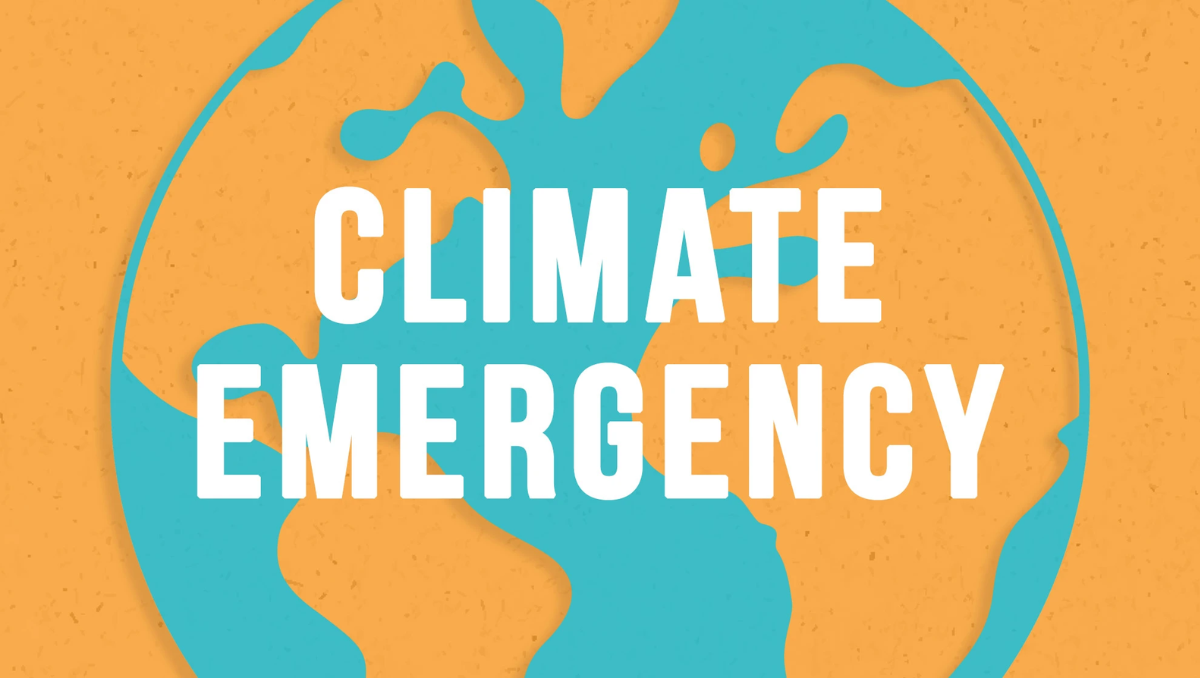A Declaration of climate emergency is an action taken by scientists, and government, in acknowledging humanity is in a climate emergency.

The Science of Climate Change:
Climate change is scientifically proven, to be real. The main cause of it is human activities. The presence of greenhouse gases in the atmosphere of Earth is directly related to the average global temperature of Earth. Since the times of the Industrial Revolution, this concentration has seen a steady rise, along with the mean global temperature.
Carbon dioxide, which is largely produced by the burning of fossil fuels, accounts for about two-thirds of greenhouse gases. Methane, a powerful pollutant, holds the responsibility for more than 25% of the warming, that we are facing today.
United Nations Environment Programme (UNEP), along with the World Meteorological Organization (WMO) set up the Intergovernmental Panel on Climate Change (IPCC). This was to share scientific information about climate change. IPCC released its Fifth Assessment Report in 2013, about the role of human activities in climate change.
Effects and Impacts of Climate Change:
Effects of a 1.1-degree increase can be seen in the world today. This is in form of increased frequency and magnitude, of extreme weather events from droughts, winter storms, heatwaves, wildfires, flooding, and hurricanes. The year 2019, ended a decade of ‘exceptional’ global heat, melting of ice, and increased sea levels due to greenhouse gases produced by human activities. 30% of the world’s total population, is now exposed to deadly heatwaves, for more than 20 days a year.
Average temperatures of ten years (2010-2019) and five years (2015-2019) are highest on the record. The year 2019 marked to become the hottest year. In the same year, total greenhouse emissions touched a new high of 59.1 gigatons of carbon dioxide equivalent (GtCo2e).
Climate Change is happening more quickly and earlier than we estimated. Still, there are some measures that we can take to tackle this global threat.
“The climate emergency is a race we are losing, but it is a race we can win.” Antonio Guterres
Climate Emergency:
A Declaration of climate emergency is an action taken by scientists, and government, in acknowledging humanity is in a climate emergency. In December 2016, the first such climate emergency was declared by a local government. There on, more than 2100 local governments, in 39 countries have made climate emergency declarations.

How to tackle Climate Change to stop Climate Emergency:
We need to act on climate change to stop the warming go beyond 1.5°C. To achieve this, we need to limit emissions by 7.6% yearly, up to 2030. Each year, we fail to act on the science of climate change, and this increases the level of difficulty and cost to reduce emissions. To limit global warming to 1.5°C or 2°C, deep reductions in methane are a necessary step. It is suggested that more than 75% of methane emissions, can be mitigated with present-day technology.
Conservation, and restoration of natural spaces, on land as well as water, are necessary for limiting carbon emissions. GDP with a high dependency on nature must invest in nature-based solutions to put a cap on global warming. Nations can opt for a green COVID-19 recovery, that could cut 25% of 2030 emissions.
Sustainable goals related to Climate Change:
Goal 1: No Poverty
Goal 7: Affordable and Clean Energy
Goal 11: Sustainable Cities and Communities
Goal 12: Sustainable Consumption and Production
Goal 13: Climate Action
Goal 14: Life Below Water
Goal 15: Life on Land
Why is Climate Emergency again in the news?
As around 20% of the US, population was facing 100F and above temperature, along with heatwaves, Biden was under pressure to announce a climate emergency.
Way ahead:
Though climate change is irrefutable, it is never too late to act on it. A fundamental transformation is required in all spheres of society. New efficient technologies can support, this by reducing net emissions and creating a cleaner world.













